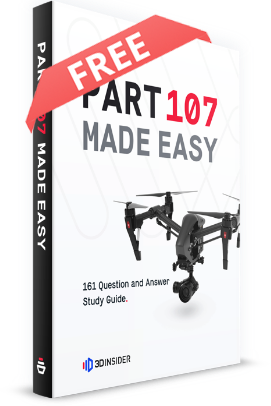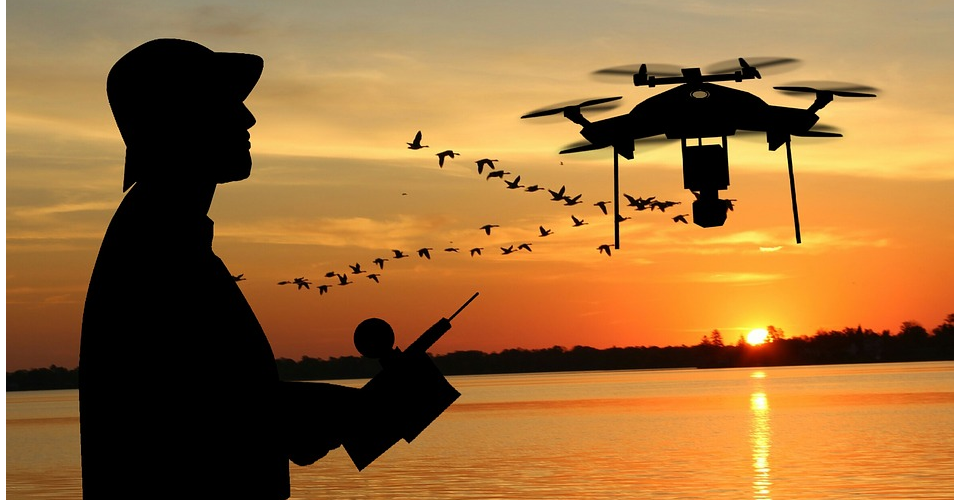Is a Pilot’s License a Requirement to Fly a Drone?
Drones have become really popular in the past years, both for professional drone pilots and those who just like to fly drones for fun. With so many drones flying around national airspace, the FAA had to impose strict drone flight rules and restrictions. In some cases, you will even need a license to fly a drone.
For many newbie drone pilots, these licensing requirements could be a source of worry. After all, most aspiring drone pilots are just normal people who have not received any formal flight training. Is a pilot’s license (formally known as an FAA Airman’s Certificate) needed to get a certification to fly a drone? If so, is there an alternative?
Do you need a pilot’s license to get drone pilot certification?
Yes and no. It depends on the type of drone pilot certification you want to earn. If you’re interested in taking the easiest and fastest way to get commercial drone pilot certification, then you are not going to need a pilot’s license. You’re not even going to need a medical health certificate.
However, there is one type of drone certification that requires a drone pilot to have an FAA Airman’s Certificate, as we shall see later on.
The easy way – Part 107 certification
If you’re worried about the requirement to have a pilot’s license (because you don’t have one), then we’ve got good news for you. Starting in August 2016, the FAA implemented the Part 107 rules for commercial drone flight. Among other new rules, Part 107 requires that commercial drone pilots secure a license before they can fly their drones for profit.
The good thing is that the FAA has relaxed the requirements to earn this license. To be eligible, you only need to be at least 16 years of age and be able to read, write, speak, and understand English. You also need to be of physically and mentally sound to operate a drone, although the FAA doesn’t require you to present a medical certificate as proof. Doing a self-assessment is enough.
If you have all these qualifications, then you need to take and pass a Part 107 knowledge test in any of the almost 700 FAA-authorized testing centers nationwide. If you pass the test, you merely need to go through a TSA background check, and you should be able to receive the Part 107 license.
Take note that Part 107 does not require any prior flight experience or even any sort of training for the drone pilot. Although we highly recommend that you go through any of the various free or paid training courses available online, the FAA doesn’t require you to. It hardly needs to be said, but a pilot’s license or an FAA Airman’s Certificate is so far beyond what the FAA requires for commercial drone pilots.

PART 107 Made Easy
- 161 Question and Answer Study Guide
- 105 pages of illustrated content
- Covers all parts of the Part 107 test
- $97 of value for free
The hard way – Section 333 exemption
Before Part 07 was even a thing, there was the Section 333 exemption. Up until a few years ago, drone pilots but to get a Section 333 exemption if they want to fly their drones for profit legally. Nowadays, Section 333 exemption holders have become a very small minority. It still has its place, though – it’s just no longer practical for most of the practicing professional drone pilots.
Earning a Section 333 exemption requires no knowledge test. However, it requires an even higher level of expertise – a valid FAA Airman’s Certificate with at least a sport or recreational level certification. This means that you need to be able to fly an actual, manned aircraft before you can get a Section 333 exemption. On top of that requirement, you also need to prove that you’re fit to fly a drone. As proof, you need to have a medical certificate issued by the FAA.
The approval process for a Section 333 exemption takes about 120 days – a good deal longer than the 1 to 2 months it takes for the whole Part 107 licensing process. Aside from certification requirements, the flight restrictions under both a Part 107 license and a Section 333 exemption are essentially the same, with just minor differences.
Why get a Section 333 exemption?
Considering that getting a Section 333 exemption is harder and takes more time than a Part 107 license, then what’s the point of getting one? After all, they both allow you to practice commercial drone flight legally.
The answer lies in different drone sizes and weights. While Part 107 license holders are limited to using drones that weigh 55 pounds or less, Section 333 exemption holders have no such limitations. This could be critical for commercial drone applications that require the use of huge drones, or special sensors that can be really heavy payloads.
What if I’m flying just for fun?
If you’re flying purely for recreation, then you don’t need to worry about any licensing requirements. However, there are still a few basic flight rules that you’ll need to follow. Recreational drone flight falls under FAA Section 336, or the Special Rule for Model Aircraft.
These rules are quite relaxed – you only need to keep your drone weight below 55 pounds, avoid flying within five miles of an airport, and always give way to manned aircraft. The most important thing to keep in mind is to fly your drone only for fun. If you take photos on a recreational flight mission, you are not allowed to sell them or use them to advance any sort of business. It can be quite easy to slip up in this matter, so you should check out our article on what the FAA considers as commercial drone use
Final thoughts
As drone technology continues to evolve, and they become critical parts not just on national airspace, but also of our country’s trade and service industry, drone legislation must also evolve to keep in pace. The Part 107 rules that were implemented almost three years ago proved to be landmark legislation for drone pilots, relaxing the certification requirements for commercial drone pilots while imposing stricter standards of knowledge among drone pilots.
One of the most important changes that came about with the Part 107 rules – and one that allowed many drone pilots to breathe a sigh of relief – was the decision of the FAA to do away with the requirement to have an FAA Airman’s Certificate. Since most aspiring drone pilots are normal people who have not received any formal flight training, the Part 107 rules have opened up the world of commercial drone pilots to a much wider population.
Drone legislation is still very much in flux, with new and revised laws seemingly popping every several months. This is still a young and maturing industry, so we can expect even more changes to come in the next few years.



You seem to be unaware of this:
SEC. 349. EXCEPTION FOR LIMITED RECREATIONAL OPERATIONS OF UNMANNED AIRCRAFT.
(a) In General.—Chapter 448 of title 49, United States Code, as added by this Act, is further amended by adding at the end the following:
Ҥ 44809. Exception for limited recreational operations of unmanned aircraft
Awesome blog.Really thank you!